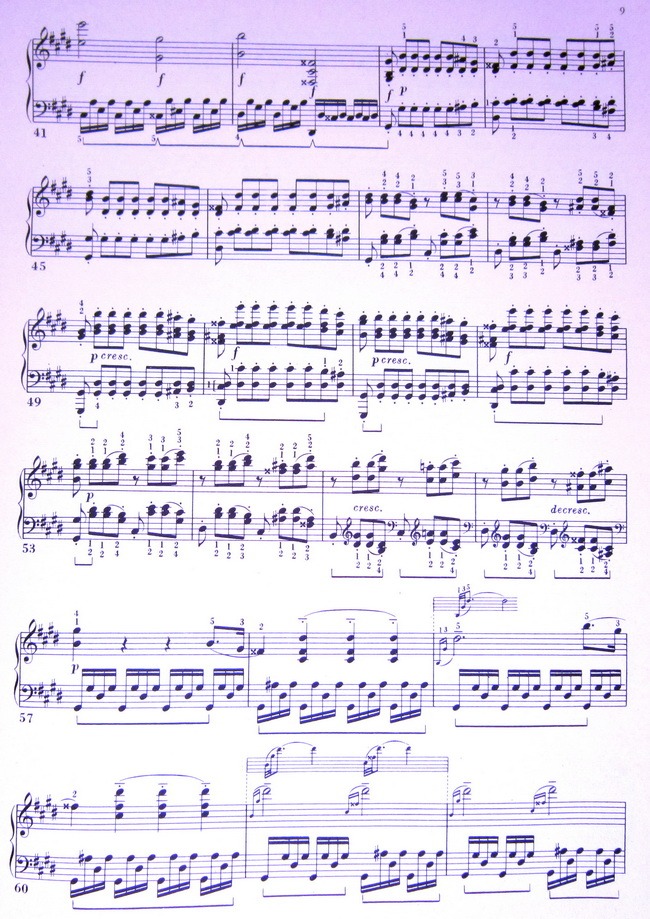
81–94), preparing the return of the tonic key.

73–80), going through a descending-fifths progression leading to a terse dominant pedal on C (mm. This goes through the relatively close keys of B ♭ minor, C minor, B ♭ minor and back to A ♭ major, where it creates a sequence on the last two notes of the theme (mm. 55–73), first in its original form, then exchanging roles between the hands. 49–54) in the secondary key, but is mostly dedicated to the second subject and its eighth-note accompaniment (mm. The development opens with the initial theme (mm. 2), again with shadings of A ♭ minor, and eventually resolving in an emphatically perfect cadence (the first one so far). 41-48) echoing the second half of the opening subject (m. 33–40) and solidly resolves to an A ♭ major chord. 26-31) of the 3-note motif that followed the descending arpeggio, the music seems to really take off on a loud closing theme outlining a cadential progression (III 6, IV 6, V 6Ĥ, V 7). The second subject stays in A ♭ major throughout, as would be expected of conventional sonata form, although it also hints its parallel minor key ( A ♭ minor). This dual quality of unity and contrast achieved by using the same musical material in opposite ways (to articulate the tonic and secondary keys respectively), proved to be a very effective device for Beethoven, which he would use again for his other much more famous piano sonata in F minor. staccato) and harmony (outlining a dominant ninth chord as opposed to the tonic chord in the opening subject). This subject clearly references the opening subject of the sonata, both being quarter-note arpeggios, whilst contrasting with it by inverting its contour (descending vs. (Using the relative major as secondary key is the most conventional procedure for minor-key sonata expositions.)Ī new melodic subject based on a descending arpeggio is presented over a ceaseless dominant pedal in broken octaves (mm. 15–20) against syncopated descending thirds on the right hand, all of which inequivocably establishes A ♭ major (the relative major of F minor) as the secondary key. An ascending bass progression leading to a half-close in the key of A ♭ major is played three times (mm. 9–14), effectively working as a transition preparing the secondary key (see sonata form).

This is seamlessly continued by imitative sequences (mm. After a short intriguing fermata, the ascending-arpeggio motif is now introduced on the dominant-minor key ( C minor), played by the left hand. This subject is reiterated and increasingly shortened until reaching a climatic half cadence in bar 8.


 0 kommentar(er)
0 kommentar(er)
